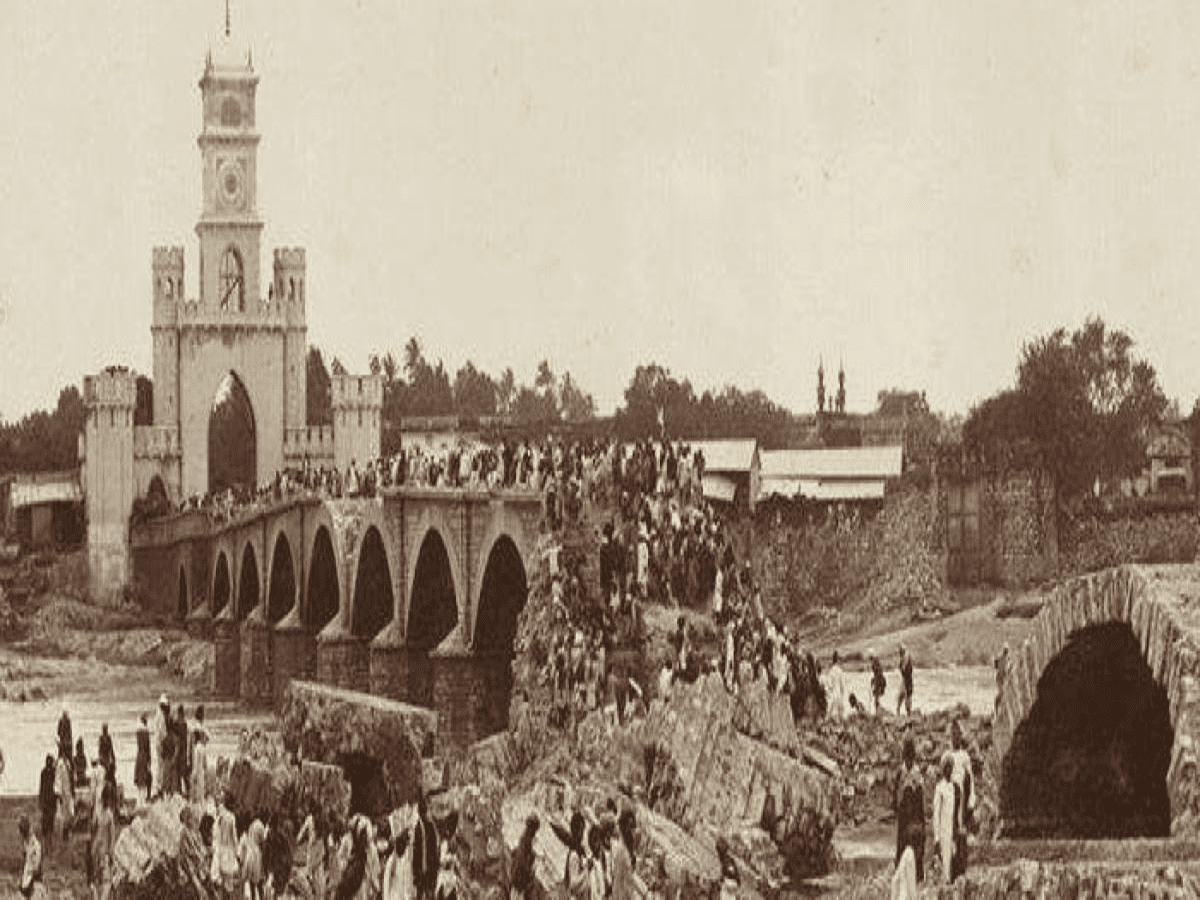Hyderabad: If there is one thing that the history of urban town planning has taught us, it is to never ever build homes in or around lake beds. But alas, history always repeats itself. The tragedy today is that the Osman Sagar and Himayat Sagar lakes, which were originally built to protect the city from the Musi river’s wrath, have today become a threat to citizens thanks to encroachments or illegal settlements.
Both the water bodies were built after the tragic 1908 Musi river floods, which took place between 28-29 September that year. Hyderabad recorded rains of 12.8 inches in 24 hours and a staggering 18.90 inches in 48 hours, resulting in the worst floods the city saw in its recorded history. Remembered as a calamity today, it also changed Hyderabad’s urban landscape by forcing the last Nizam to rebuild and modernize the city.
With the construction of Osman Sagar and Himayat Sagar, the city was flood-proofed. However, in that process, we turned the Musi river dry, which over decades has been encroached upon by local residents, who now live on its lakebed. The area of Moosa Nagar is a very good case study, which has been flooded twice in two years since 2020.
Imran Taj, a resident of the area, now has to pack his most precious belongings each time the government opens the gates of Osman Sagar and Himayat Sagar (32 gates) to let water in the Musi river flow when it rains heavily. “They tell us an hour in advance, so what can we even take? Our houses are filled with garbage and muck for days after,” he added.
In the last three years, Moosa Nagar was flooded twice in 2020 and this year, as water from Osman Sagar and Himayat Sagar were released into the Musi river due to rains. In fact, the situation was so bad that homes were submerged in water over a feet or more.

A relook at the devastating 1908 Musi river floods and what has happened in Hyderabad since then will help us better understand why the city still gets flooded.
The 1908 Musi floods – 15,000 deaths
Hyderabad was founded in 1591 on the southern bank of the Musi river by Mohd. Quli Qutb Shah, the fourth monarch of the Golconda dynasty (1518-1687). The Qutb Shahi period ended in 1687 after the city was destroyed by the Mughals under Aurangzeb. Following that, the Nizams of the Asaf Jahi era began in 1724, with Mir Kamruddin Khan becoming the Hyderabad state’s first Nizam.
The earliest recorded flooding from the Musi river is from 1631. Later in 1678, during the reign of Abdullah Qutb Shah, the sixth Golconda ruler, another also took place. After that, it is said that in 1687, during the reign of Abul Hassan, who fought against Mughal emperor Aurangzeb’s army, a massive flood killed soldiers from the Mughal armies during their eight-month long siege of Golconda fort.
As many as 13 major floods are believed to have destroyed Hyderabad until the 1908 deluge. That year, during the reign of Mahbub Ali Pasha (sixth Nizam), the floods damaged about 59000 plus houses, washed away bridges and killed thousands of people (15,000 estimated).
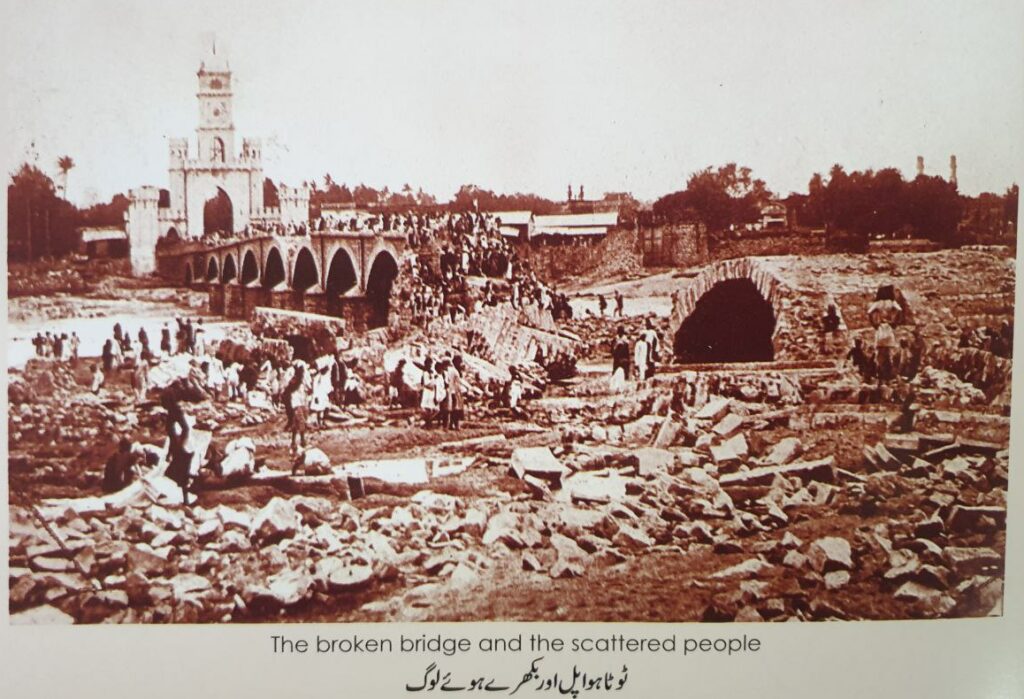
A major reason behind the massive destruction was the flooding of water tanks or beds that lay on the northern and southern banks of the Musi river. There were 788 tanks in a basin of 860 square miles of the Musi River, roughly at the rate of one tank for every square mile of the catchment (as mentioned in the legendary engineer M. Visweswaraya’s autobiography).
From the total 788 tanks abounding the Musi river, 221 were breached, which resulted in Hyderabad getting flooded. Images from September 1908 show devastating pictures of broken homes, a damaged Afzal Gunj bridge, and also a flooded British Residency (now Koti Women’s College) gate. The Afzal Gunj hospital, over which the Osmania Hospital was built eventually, was also severely damaged.
Flood-proofing Hyderabad with Osman Sagar and Himayat Sagar:
After the 1908 Musi river floods, the then Nizam (6th) Mahbub Ali Pasha called for sir Visweswaraya with the idea to have an engineer examine the damage. THe monarch wanted Hyderabad to be protected from the Musi river’s wrath, and to flood-proof the city. Visveswaraya, who was traveling in Italy in 1908, joined as a Special Consulting Engineer for the Hyderabad state on April 15, 1909.

After conducting extensive , Visweswaraya’s surveys showed that the damaging floods as many of the water tanks in Hyderabad were breached. He stated that for Hyderabad to be immune from the Musi river’s flooding, reservoirs of adequate capacity had to be built for “temporarily impounding all floods in excess of what the river channel could carry”.
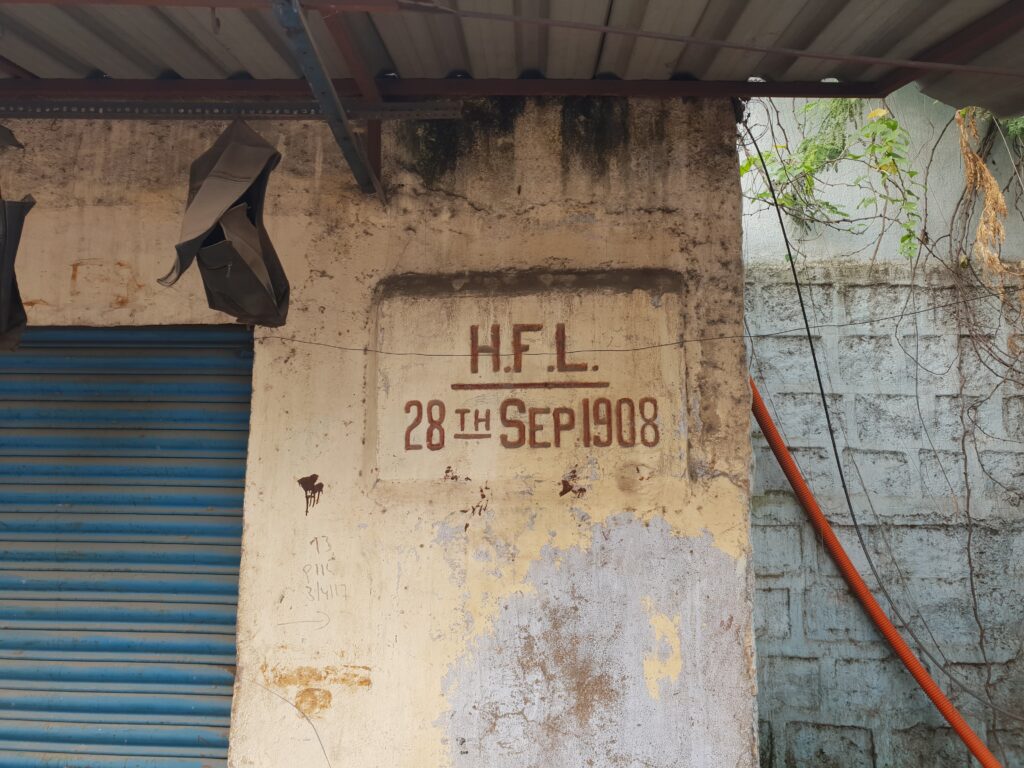
The two dams that he proposed to be built were built during the period of Hyderabad’s last Nizam Mir Osman Ali Khan. Those two dams are the Osman Sagar (known a Gandipet lake) and Himayat Sagar, which today have a full-tank capacity of 45 million gallons per day (MGD). Hyderabad’s daily water supply today is about 462 MGD, of which only about 15 MGD is now drawn from both the historic lakes.
The foundation of Osman Sagar was laid in on 24 March 1913, and the Himayat Sagar was built later in the 1920s.
1912: City Improvement Board is also formed
When Osman Ali Khan ascended the throne in 1911, he became the seventh and last Nizam of the Hyderabad state. His accession also coincided with an epidemic. Cases of the bubonic plague were reported in Hyderabad, and the city’s administration sounded the emergency alert just in time.
After realising the gravity of the situation, the Nizam’s government, with help from the British set up the City Improvement Board (CIB) in 1912. This fundamentally changed Hyderabad and also in the process beautified the city with the Musi river. Nothing like this had been done since the city was founded 431 years ago in 1591 by Mohd. Quli Qutb Shah.
The City Improvement Board (CIB), constituted by Osman Ali Khan to develop Hyderabad, in 1912, is a very important that body was established. Under it, the government not only redeveloped Hyderabad, saved it from the Musi river’s flooding, but also ensured that the poor, who required help after the 1908 floods, were not overlooked.
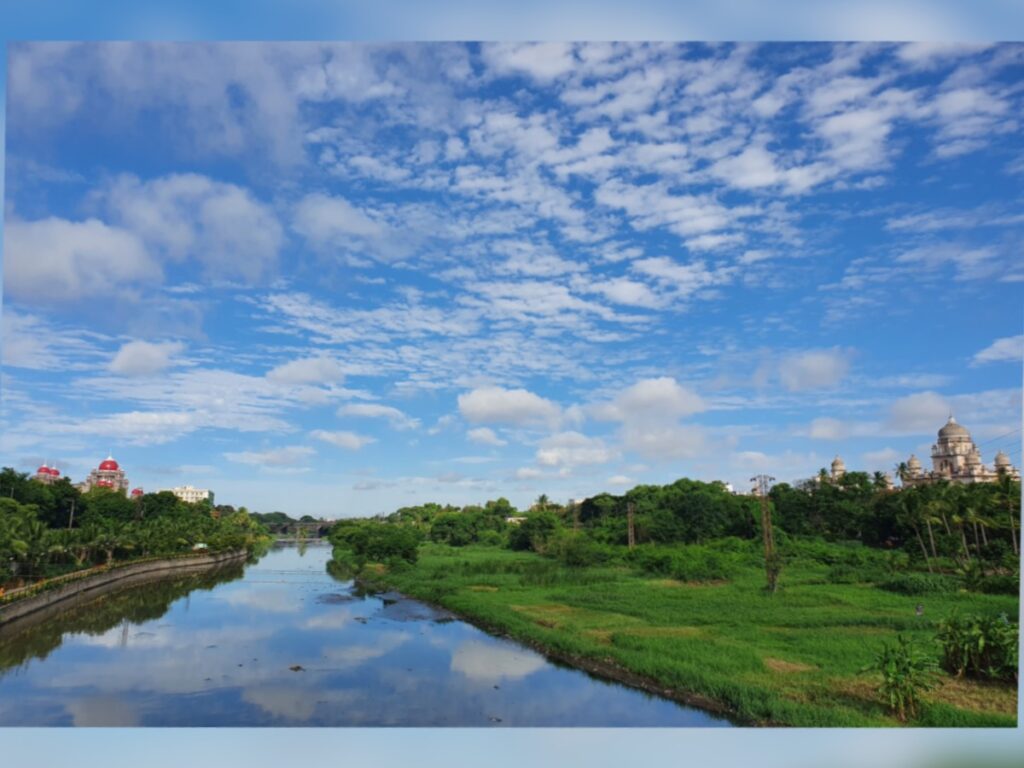
In about 30 years after 1912, landmark public infrastructure buildings which are still in use today, like the High Court (1919), Govt. City College, Osmania General Hospital, Unani Hospital (1929), etc., came up. The CIB also redeveloped Hyderabad’s slums to decongest them. It also built housing for the poor, spending about Rs. 30 lakh in building 2,500 houses in 12 localities. The Musi river had also been beautified, and it functioned in a way where it did not flood Hyderabad.
The houses were classified under A, B, C, and D classes (each differing in size and amenities). With sanitation and hygiene given most importance, the newly-constructed homes were given to occupants on a hire-purchase system over 15 years. For government homes designed about a century ago, those were designed with toilets, verandas and kitchens as well.
Over Rs 50 lakh spent on Hyderabad
The erstwhile state of Hyderabad (16 districts; 8 in Telangana, 5 in Maharashtra and 3 in Karnataka) made most of its income through revenues from farming taxes and levies from rural areas which were quite backward. While the Nizam rebuilt and modernised Hyderabad, the Telangana area, run (mostly Telugu dominant caste Hindus) by Jagirdars or landlords, was severely underdeveloped.
In total, Rs.50, 85,200 was spent to develop the city. Of that, Rs.14, 36,565 was used for slum clearance, improving traffic roads, constructing drains, and other works.
The situation today
A major reason for houses in Hyderabad getting flooded is due to people constructing homes in full tank levels of lakes and also in the riverbed of the Musi. While Moosa Nagar is one example, there are several smaller structures in and around the Musi river. Apart from that, other areas like Nadeem Colony for example, have been built in the FTL of the historic Shah Hatim Talab in the Golconda fort area.
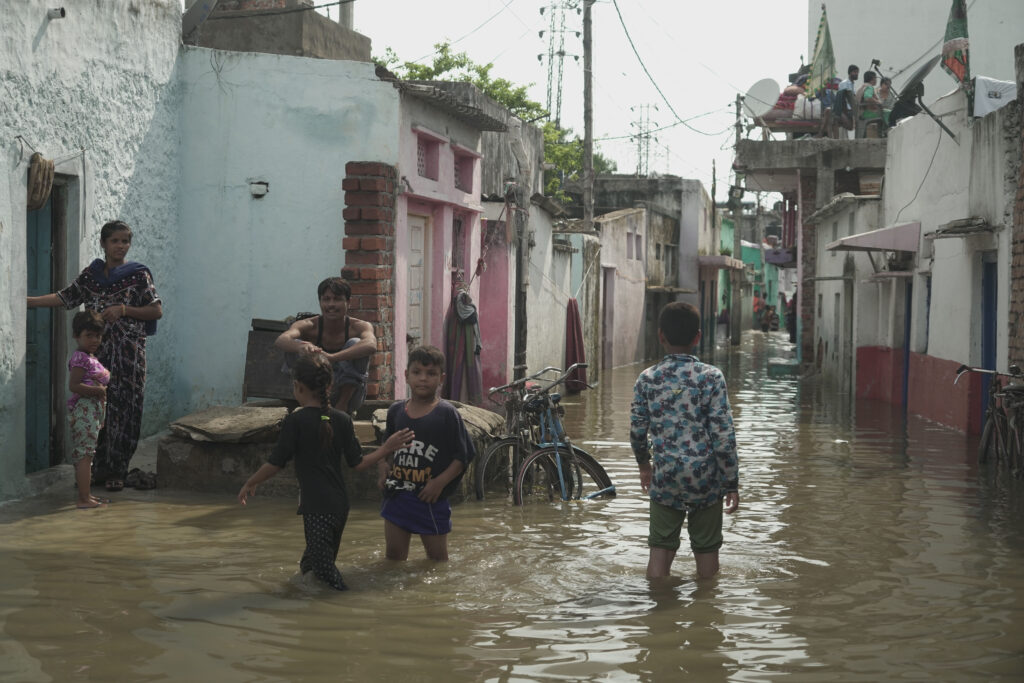
Urban designer and architect Shankar Narayan said that flooding happens for a few days in a year and not something that happens every year. He added that homes built in FTLs now will not be destroyed, and that the best way is to take up measures to avoid water from entering homes. “Small things can be done, like breaking walls which actually lead to flood water levels rising in homes,” he noted.

